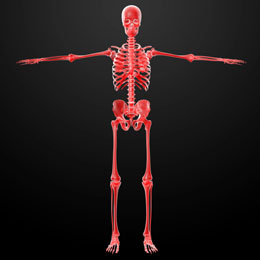Synovial joints are one of the most common joint types in the human body. Read the following article to gain more information about this subject.

A joint is the meeting point of two or more bones. A synovial joint, also known as diarthrosis, is present at many places in the human body. There are many differences between a synovial joint and a cartilaginous or fibrous joint. The main difference lies in the fact that in the former one, there exists a capsule that surrounds the articulating surfaces of the joint, along with the presence of a lubricating synovial fluid in the capsule, present in the synovial cavity.
Structure
It consists of three main parts. The fibrous articular capsule is continuous with the bone. Each capsule consists of an outer layer, that is avascular white fibrous tissue, and an inner secreting layer, which is usually known as the synovial membrane. On the inside of the capsule is the second part of the joint, known as articular cartilage. This part covers the end surfaces of the bones that articulate in the joint. This cartilage provides the loading and the unloading mechanism to resist load and shock on movement or impact. The last part of the joint is the synovial membrane, which is the inner layer of the fibrous articular capsule. The synovial membrane covers the lining of the synovial cavity, where the articular cartilage is absent.
Types
Gliding Joints
These are also known as planar joints. In this case, there is gliding of one articulating surface of the bone against another. The opposing bone surfaces are almost flat, with movement limited by their tight joint capsules.
Example: The joint between the acromion of the scapula and the clavicle, the wrist joint, etc.
Hinge Joints
It is also known as ginglymus, and it's a bone joint where the articular surfaces are molded to each other in such a manner, so as to permit motion in only one plane, which is in the forward and backward directions. The articular surfaces are connected together by strong collateral ligaments.
Example: Knee joint, interphalangeal joints, ankle joint, etc.
Condyloid Joints
It is also known as ellipsoidal joint. An ovoid articular surface or a condyle is received into an elliptical cavity. This allows movement in two planes, like flexion, extension, adduction, abduction, and circumduction.
Example: Radio-carpal joint, metacarpophalangeal joint, metatarsophalangeal joint, etc.
Saddle Joints
It is also known as a sellar joint. In this case, the opposing surfaces are reciprocally concave-convex. The movements allowed are same as those seen in the condyloid type, i.e., flexion, extension, adduction, abduction, and circumduction. However, axial rotation cannot be done.
Example: Carpometacarpal joint of the thumb.
Ball and Socket Joints
It is also known as the spheroidal joint. In this case, one of the bones is allowed to have an indefinite number of movements in various planes, with respect to the first bone.
Example: Hip joint and shoulder joint.
Synovial Joints and Movements
Type of Movement
Description
Abduction
Movement away from the mid-line of the body
Adduction
Movement towards the mid-line of the body
Extension
Straightening limbs at a joint
Flexion
Bending the limbs at a joint
Rotation
A circular movement around a fixed point
Circumduction
Combination of flexion, extension, adduction, and abduction
Thus, synovial joints are the most flexible ones in the body, and they allow maximum movement when compared to any other type. However, this freedom also increases the risk of injury to these joints.


 A joint is the meeting point of two or more bones. A synovial joint, also known as diarthrosis, is present at many places in the human body. There are many differences between a synovial joint and a cartilaginous or fibrous joint. The main difference lies in the fact that in the former one, there exists a capsule that surrounds the articulating surfaces of the joint, along with the presence of a lubricating synovial fluid in the capsule, present in the synovial cavity.
A joint is the meeting point of two or more bones. A synovial joint, also known as diarthrosis, is present at many places in the human body. There are many differences between a synovial joint and a cartilaginous or fibrous joint. The main difference lies in the fact that in the former one, there exists a capsule that surrounds the articulating surfaces of the joint, along with the presence of a lubricating synovial fluid in the capsule, present in the synovial cavity.